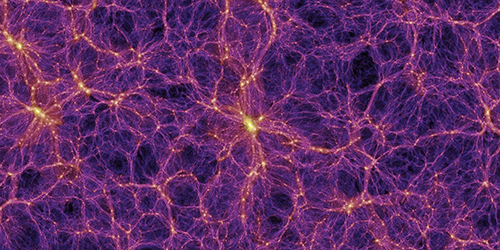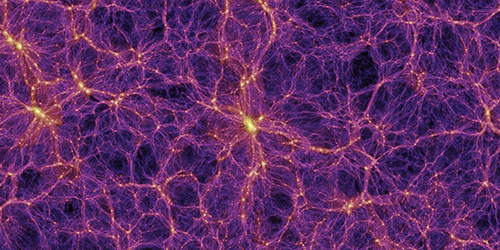Valuable Voids
Massive groups of galaxies called galaxy clusters are known to be useful for studying the Universe as a whole. Less well known is that their cosmic opposites, vast expanses of space with few galaxies, dubbed cosmic voids, are also potentially suited for the same purpose. Alice Pisani of the Institute of Astrophysics in Paris, France, and colleagues now report a theoretical analysis that may move cosmic voids to center stage. They demonstrate that measurements of the abundance of voids provide a sensitive way to study dark energy—the mysterious entity that is causing the Universe’s expansion to speed up.
Cosmologists typically assume that the density of dark energy is either constant or varies over time. These hypotheses could be distinguished by measuring parameters of the so-called equation of state, which describes the relationship between the density and pressure of dark energy. The abundance of voids as a function of void radius and redshift depends on quantities that can be described in terms of these parameters, so it could be used to place limits on them.
Pisani and colleagues set out to estimate what bounds on such parameters may be obtained from the number of voids expected to be detected by two upcoming spacecraft, ESA’s Euclid satellite and NASA’s WFIRST mission. By combining these bounds with independent constraints derived from observations of the cosmic microwave background radiation and type Ia supernovae, the researchers show that the abundance of voids can substantially shrink the limits on the parameters and thus help determine whether dark energy is constant or dynamical.
This research is published in Physical Review D.
–Ana Lopes





